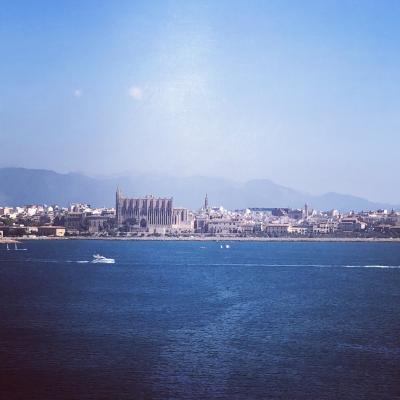How can visitors experience the blend of Islamic and Christian influences in Mallorca’s architecture today?
Similar Topics
mallorca architecture
islamic christian blend
palma cathedral
la seu mallorca
moorish architecture
gothic style mallorca
palma old quarters
islamic decorative elements
Visitors to Mallorca can see the harmonious blend of Islamic and Christian influences throughout the island’s rich architectural heritage, reflecting its complex history under different cultures. The most striking example can be found in Palma, the capital, where the imposing Palma Cathedral, or La Seu, stands as a symbol of Christian reconquest. Built over the site of a former mosque after the island was reclaimed from Moorish rule, the cathedral incorporates Gothic style with subtle remnants of Islamic decorative elements. The intricate stonework and elegant arches evoke the craftsmanship characteristic of Moorish art, offering a visual dialogue between the two traditions.
Beyond the cathedral, wandering the old quarters reveals narrow streets lined with buildings that bear Islamic architectural fingerprints alongside Christian design. Many traditional houses showcase features such as inner courtyards, arched doorways, and tilework reminiscent of Moorish aesthetics, yet these coexist with baroque and Renaissance influences introduced after the Christian era. This fusion presents a living testament to the island’s layered past, where each era added to the evolving urban fabric without erasing previous identities.
Visitors can also explore smaller churches and former Islamic sites that have been adapted or expanded over time, illustrating the layering of cultural influences. In particular, the use of light, water features, and geometric patterns often harks back to Islamic design principles, while Christian iconography blends seamlessly into these spaces. Experiencing Mallorca’s architecture is to appreciate a unique synthesis, where the legacy of Islamic rule gracefully intertwines with Christian artistry, creating an atmosphere of historical continuity and intercultural respect.
Beyond the cathedral, wandering the old quarters reveals narrow streets lined with buildings that bear Islamic architectural fingerprints alongside Christian design. Many traditional houses showcase features such as inner courtyards, arched doorways, and tilework reminiscent of Moorish aesthetics, yet these coexist with baroque and Renaissance influences introduced after the Christian era. This fusion presents a living testament to the island’s layered past, where each era added to the evolving urban fabric without erasing previous identities.
Visitors can also explore smaller churches and former Islamic sites that have been adapted or expanded over time, illustrating the layering of cultural influences. In particular, the use of light, water features, and geometric patterns often harks back to Islamic design principles, while Christian iconography blends seamlessly into these spaces. Experiencing Mallorca’s architecture is to appreciate a unique synthesis, where the legacy of Islamic rule gracefully intertwines with Christian artistry, creating an atmosphere of historical continuity and intercultural respect.
🧩 Related Questions
Related Question
Are there any unique local legends or superstitions related to death and burial in Mallorca?
Related Question
What role do thick walls and small windows play in protecting Mallorcan buildings from temperature extremes?
Related Question
In what ways does the Sierra de Tramuntana influence the scenery on the route to Banyalbufar?
